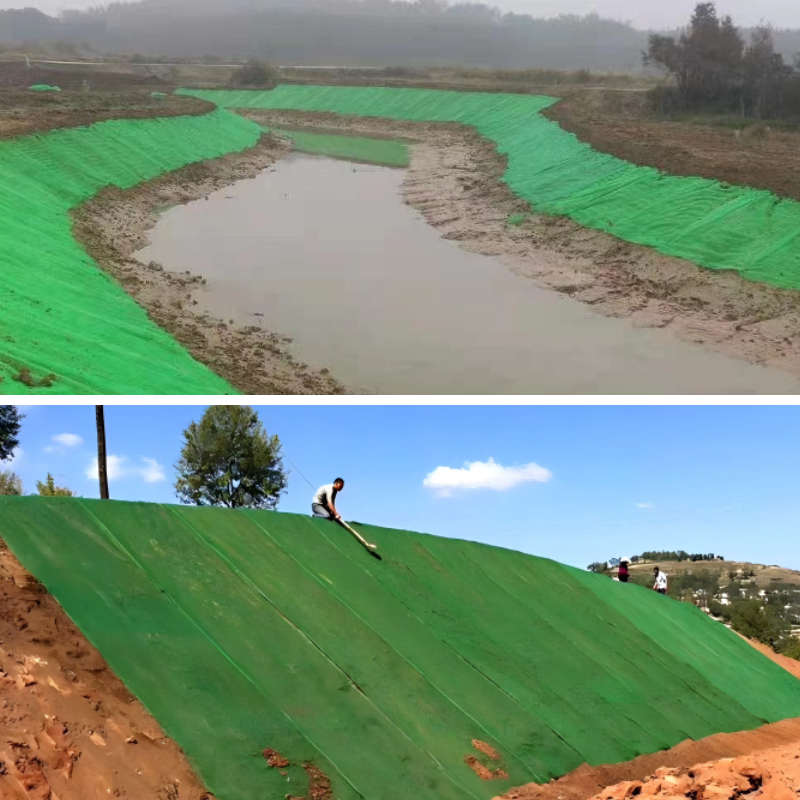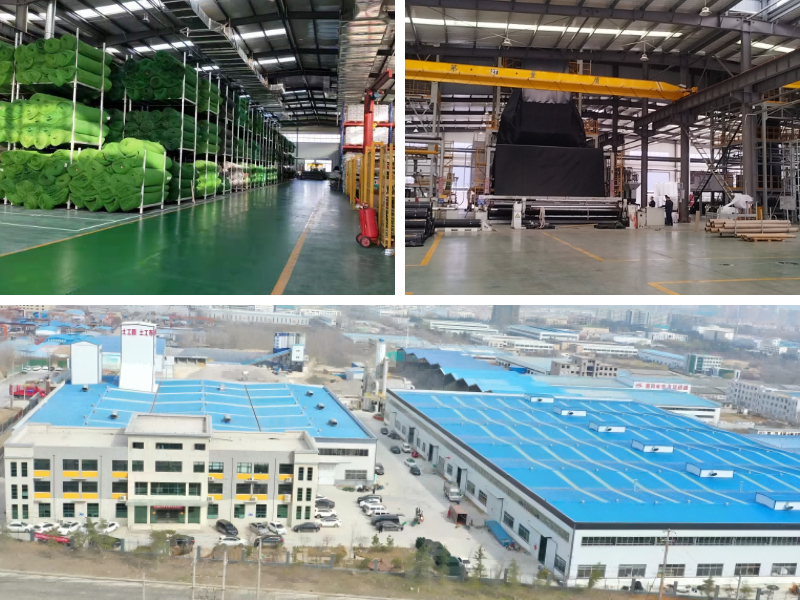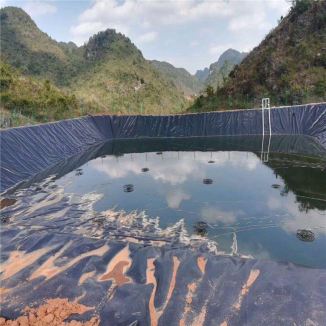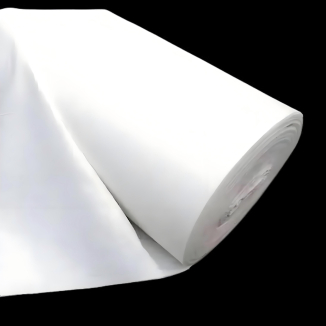How Long Does Geomat Last? Factors Affecting Lifespan
Geotextiles, regularly referred to as geomats, are necessary elements in civil engineering, environmental restoration, and erosion manipulate projects. One of the most frequent questions assignment managers, contractors, and property proprietors ask is: How lengthy does geomat last? The reply varies drastically primarily based on the kind of geomat, cloth composition, environmental conditions, and set up practices. Generally, geomats can final somewhere from 5 years to over 50 years—but appreciation the elements that have an impact on this lifespan is key to maximizing their overall performance and value. In this article, we’ll destroy down regular lifespans for frequent geomats (including 3D geonet, riparian vegetation net, and erosion manage matting) and explore the necessary elements that decide how lengthy they stay effective.
1. Typical Lifespan Ranges for Common Geomats
Before diving into influencing factors, it’s vital to set up baseline lifespan expectations for the geomats most often used in projects. Each kind is designed for unique purposes, and their sturdiness aligns with their meant use case—whether brief erosion manipulate or long-term infrastructure support.
1.1 Erosion Control Matting: 5 to 15 Years (Temporary to Semi-Permanent)
Erosion manipulate matting is mainly used to stabilize soil on slopes, development sites, or post-disturbance areas (like after wildfires or mining). Most erosion manipulate matting is categorised as both transient or semi-permanent. Temporary options, regularly made from herbal substances like straw, coconut coir, or jute, normally remaining 1 to three years—just lengthy ample to assist the increase of native vegetation, which then takes over soil stabilization. Semi-permanent erosion manage matting, made from artificial substances (such as polypropylene or polyethylene), extends this lifespan to 5 to 15 years. These artificial mats are resistant to rot and degradation, making them perfect for areas the place vegetation institution takes longer or the place ongoing erosion safety is wished (e.g., motorway embankments or movement banks). Importantly, erosion manipulate matting works hand-in-hand with vegetation: as flora grow, their roots give a boost to the soil, and the mat presents preliminary support—so the mat’s lifespan frequently aligns with when vegetation turns into self-sustaining.
1.2 Riparian Vegetation Net: 10 to 25 Years (Long-Term Aquatic Support)
Riparian vegetation internet is a specialised geomat designed for use in wetland areas, circulation banks, and shorelines—regions the place soil erosion is accelerated via water glide and wave action. Unlike widespread erosion manipulate matting, riparian vegetation internet is engineered to stand up to consistent publicity to water, fluctuating moisture levels, and even moderate aquatic predators (like burrowing animals). Most riparian vegetation nets are made from long lasting artificial fibers or handled herbal substances (e.g., rot-resistant jute blended with polypropylene). This development approves them to final 10 to 25 years. The net’s essential function is to anchor riparian vegetation (such as grasses, shrubs, or trees) as they set up their root systems, which are integral for stabilizing banks, filtering water, and assisting aquatic ecosystems. Over time, the riparian vegetation internet might also regularly degrade, however through then, the mature plant roots will have shaped a herbal barrier in opposition to erosion—ensuring long-term steadiness even after the internet itself is no longer visible.
1.3 3D Geonet: 20 to 50+ Years (Permanent Infrastructure Use)
3D geonet, additionally regarded as a geocell or 3D geogrid, is a high-performance geomat with a 3-dimensional shape (often a honeycomb or grid pattern) that traps and reinforces soil, aggregate, or different fill materials. Unlike erosion manage matting or riparian vegetation net, 3D geonet is designed for everlasting or long-term applications, such as street bases, protecting walls, landfills, or large-scale slope stabilization projects. Made from ultra-durable substances like high-density polyethylene (HDPE) or polyvinyl chloride (PVC), 3D geonet resists UV radiation, chemical degradation, and mechanical stress—allowing it to remaining 20 to 50+ years. In some cases, when set up in included environments (e.g., underneath roadways or inside landfills), 3D geonet can even exceed 50 years of service. Its 3D shape distributes weight evenly, prevents soil shifting, and enhances load-bearing capacity—making it a cornerstone of long-lasting civil engineering projects. The key gain of 3D geonet is its longevity: it eliminates the want for conventional replacements, decreasing upkeep fees and mission downtime over decades.
2. Key Factors That Affect Geomat Lifespan
While the kind of geomat units a baseline lifespan, quite a few exterior and installation-related elements can both lengthen or shorten its high quality life. Understanding these elements is quintessential for mission planning—whether you’re deciding on a geomat for a temporary erosion manipulate task or a everlasting infrastructure build.
2.1 Material Composition: The Foundation of Durability
The fabric a geomat is made from is the single most essential element in figuring out its lifespan. Natural and artificial substances have vastly exclusive resistance to degradation, and the desire between them relies upon on the project’s timeline and environment.
Natural Materials: Geomats made from straw, coconut coir, jute, or wooden fibers are biodegradable—meaning they destroy down over time as microorganisms (like micro organism or fungi) decompose them. While this is advisable for brief tasks (e.g., transient erosion manage on a building site), it limits their lifespan to 1 to 5 years. Natural geomats additionally combat in moist environments: extra moisture quickens rot, which can decrease their effectiveness by using 30% to 50% in contrast to dry conditions. For example, a coconut coir erosion manage matting hooked up in a wet vicinity might also closing solely 1 to two years, whereas the identical mat in a dry location ought to final three to four years.
Synthetic Materials: Geomats made from polypropylene, polyethylene, HDPE, or PVC are non-biodegradable and resistant to rot, mold, and insect damage. These substances additionally have excessive tensile energy (resistance to stretching or tearing) and are much less affected with the aid of moisture. For instance, a artificial 3D geonet made from HDPE can stand up to a long time of publicity to soil, water, and UV radiation besides considerable degradation. However, no longer all synthetics are equal: lower-quality plastics may additionally comprise components that smash down underneath UV light, so selecting a geomat with UV stabilizers is indispensable for outside applications. Synthetic riparian vegetation net, for example, regularly consists of UV inhibitors to forestall brittleness in direct sunlight—extending its lifespan from 10 to 25 years alternatively of 5 to 10 years except stabilizers.
2.2 Environmental Conditions: Exposure Determines Degradation Rate
The surroundings the place a geomat is hooked up has a profound have an effect on on how lengthy it lasts. Factors like sunlight, moisture, temperature fluctuations, and chemical publicity can all speed up put on and tear—even for long lasting artificial geomats.
UV Radiation: Sunlight’s ultraviolet (UV) rays destroy down the molecular shape of plastics and herbal fibers over time. This process, known as photodegradation, reasons geomats to grow to be brittle, crack, or lose tensile strength. Outdoor geomats (like erosion manipulate matting on a slope or 3D geonet in an above-ground conserving wall) are most vulnerable. A artificial erosion manipulate matting besides UV protection, for example, may also lose 50% of its electricity after simply two to three years of direct sunlight—shortening its lifespan from 10 to three years. Geomats mounted underground (e.g., 3D geonet below a road) or shaded with the aid of vegetation (e.g., riparian vegetation internet beneath trees) are much less affected through UV radiation, so their lifespans stay nearer to their most potential.
Moisture and Water Exposure: Constant moisture or submersion speeds up degradation for herbal geomats (via rot) and some synthetics (via hydrolysis, the place water breaks down chemical bonds). Riparian vegetation net, which is designed for moist environments, is engineered to withstand hydrolysis—using substances like HDPE that don’t take in water. However, even these geomats can be affected by way of stagnant water or excessive ranges of natural depend (e.g., algae growth), which can entice moisture and motive localized degradation. For example, a riparian vegetation internet mounted in a slow-moving movement with excessive algae tiers might also remaining 15 years as a substitute of 25 years. In contrast, erosion manipulate matting established in a well-drained location will closing longer than one in a waterlogged site—since extra moisture slows vegetation boom and hurries up rot for herbal mats.
Temperature Fluctuations: Extreme warm or bloodless temperatures, or universal temperature swings, can reason geomats to extend and contract—leading to cracks or warping. In areas with harsh winters (e.g., freezing temperatures) or warm summers (e.g., 100°F+), geomats may additionally degrade faster. For instance, a 3D geonet mounted in a wasteland climate, the place daylight temperatures attain 120°F and midnight temperatures drop to 40°F, may additionally improve small cracks after 10 years—reducing its load-bearing capacity. Synthetic geomats with excessive thermal steadiness (like HDPE 3D geonet) are higher ideal for these environments, as they can stand up to temperature levels from -40°F to 175°F except widespread damage.
Chemical Exposure: Exposure to chemical compounds (like fertilizers, pesticides, industrial runoff, or saltwater) can damage down geomats—especially herbal fibers or low-quality synthetics. For example, erosion manage matting hooked up close to an agricultural area the place herbicides are used might also degrade quicker if the chemical substances seep into the soil. Similarly, riparian vegetation internet established in saltwater (e.g., coastal shorelines) ought to be made from salt-resistant substances (like PVC) to keep away from corrosion. A salt-sensitive riparian vegetation internet should final solely 5 to 7 years in saltwater, in contrast to 15 to 25 years in freshwater.
2.3 Installation Quality: Proper Placement Prevents Premature Failure
Even the most long lasting geomat will fail early if it’s mounted incorrectly. Poor set up can lead to gaps, wrinkles, or insufficient anchoring—exposing the mat to extra stress and environmental damage.
Soil Preparation: Geomats matter on a stable, easy substrate to characteristic effectively. If the soil is rocky, uneven, or consists of particles (like tree roots or building waste), the geomat may also tear or shift over time. For example, putting in erosion manage matting on a slope with free rocks can motive the mat to puncture—allowing soil to erode via the holes and decreasing the mat’s lifespan by using 50% or more. Proper soil guidance (e.g., grading, getting rid of debris, and compacting the soil) ensures the geomat lies flat and evenly distributes stress.
Anchoring and Securement: Geomats ought to be securely anchored to forestall them from being washed away via water or blown through wind. This is specifically integral for erosion manipulate matting on steep slopes and riparian vegetation internet alongside circulate banks. Common anchoring techniques encompass stakes, pins, or trenches (where the mat’s edges are buried in soil). If a geomat is no longer anchored properly, it might also raise or shift—exposing naked soil to erosion and inflicting the mat to put on out faster. For instance, a 3D geonet used in a preserving wall that’s no longer anchored to the base may additionally slide over time, main to cracks and decreasing its lifespan from 50 to 20 years.
Overlapping and Seaming: When more than one geomat rolls are used, appropriate overlapping (usually 6 to 12 inches) and seaming (using adhesive, warmness welding, or stitches) stop gaps the place erosion can occur. Gaps permit water or soil to skip through, which can undermine the geomat’s steadiness and purpose localized degradation. A riparian vegetation internet with insufficient seaming, for example, may additionally improve gaps the place water flows through—eroding the soil under and inflicting the internet to tear. Proper seaming ensures the geomat acts as a single, non-stop barrier—extending its lifespan via making sure even stress distribution.
2.4 Maintenance Practices: Proactive Care Extends Lifespan
Regular protection is frequently overlooked, however it can appreciably lengthen a geomat’s lifespan via addressing small problems earlier than they grow to be fundamental problems.
Inspection and Repair: Periodic inspections (e.g., quarterly for transient geomats, yearly for everlasting ones) permit you to become aware of injury like tears, holes, or shifting. For example, if a part of erosion manipulate matting is torn via a fallen branch, repairing it with a patch of the identical cloth prevents soil erosion thru the tear—extending the mat’s lifespan by way of two to three years. For 3D geonet in infrastructure projects, inspections can perceive cracks or shifting, which can be repaired with extra anchoring or fill material.
Vegetation Management: For geomats that aid vegetation (like riparian vegetation internet or erosion manipulate matting), keeping healthful plant boom is key. Overgrown vegetation can put stress on the mat (e.g., tree roots pushing via the net), whilst sparse vegetation leaves the mat uncovered to extra environmental damage. Trimming overgrown flora and reseeding naked areas ensures the vegetation continues to improve the soil—reducing the mat’s workload and extending its lifespan. For example, a riparian vegetation internet with well-maintained shrubs will ultimate longer than one the place vegetation has died off, as the shrubs take in water glide and shield the internet from wave action.
Debris Removal: Debris like leaves, branches, or sediment can accumulate on pinnacle of geomats, trapping moisture and inflicting rot (for herbal mats) or chemical degradation (for synthetics). Removing particles typically (e.g., after storms) maintains the mat dry and uncovered to much less stress. For instance, a 3D geonet used in a landfill cap that’s blanketed in particles can also lure rainwater—accelerating hydrolysis and lowering its lifespan. Debris elimination ensures the geomat stays purposeful and protected.
3. How to Maximize Your Geomat’s Lifespan: Practical Tips
Now that you recognize the elements affecting geomat lifespan, right here are actionable pointers to make certain your geomat lasts as lengthy as possible—saving you time, money, and resources.
3.1 Choose the Right Geomat for Your Project
Selecting a geomat that fits your project’s timeline, environment, and motive is the first step to maximizing lifespan. For example:
Use transient natural erosion manipulate matting (e.g., straw or coir) for momentary initiatives (1 to three years) the place vegetation will set up rapidly (e.g., a residential building site).
Use artificial erosion manipulate matting for semi-permanent initiatives (5 to 15 years) in outdoor, uncovered areas (e.g., motorway slopes).
Use riparian vegetation internet for wetland or shoreline tasks (10 to 25 years) the place water publicity is steady (e.g., move financial institution restoration).
Use 3D geonet for everlasting infrastructure (20 to 50+ years) like avenue bases, holding walls, or massive slope stabilization projects.
Always take a look at the manufacturer’s specs for lifespan estimates and fabric resistance (e.g., UV, moisture, or chemical resistance) to make certain the geomat aligns with your environment.
3.2 Prioritize Quality Materials and UV Protection
Invest in great geomats with built-in protections towards frequent degradation factors. For outside projects, pick out artificial geomats with UV stabilizers—this can prolong lifespan via 50% or more. For moist environments, pick riparian vegetation internet or 3D geonet made from waterproof substances like HDPE or PVC. Avoid low-quality synthetics that lack these protections, as they will degrade quicker and require beforehand replacement.
3.3 Ensure Professional Installation
Hire skilled contractors who specialize in geomat installation. Proper soil preparation, anchoring, and seaming are critical—even small errors can lead to untimely failure. Ask for references or examples of previous initiatives to make certain the contractor has a music report of great work. For example, a contractor skilled in riparian restoration will understand how to anchor riparian vegetation internet to face up to movement flow, whereas an inexperienced contractor may also use insufficient stakes that pull free over time.
3.4 Implement a Regular Maintenance Plan
Create a preservation agenda primarily based on the geomat kind and environment. For brief erosion manage matting, investigate each three to 6 months; for everlasting 3D geonet, look into annually. Tasks have to include:
Checking for tears, holes, or shifting.
Removing particles (leaves, branches, sediment).
Trimming overgrown vegetation or reseeding naked areas.
Repairing small damages straight away (e.g., patching a tear in erosion manage matting) to stop them from worsening.
Conclusion
The lifespan of a geomat—whether it’s erosion manage matting, riparian vegetation net, or 3D geonet—depends on a mixture of fabric composition, environmental conditions, set up quality, and maintenance. By appreciation these elements and taking proactive steps to pick the proper geomat, make investments in pleasant materials, and make sure desirable care, you can maximize your geomat’s lifespan—from a few years for brief tasks to a long time for everlasting infrastructure. Remember: a well-selected and maintained geomat now not solely lasts longer however additionally presents higher performance, lowering erosion, defending ecosystems, and saving you cash on replacements and repairs. Whether you’re working on a small landscaping challenge or a giant civil engineering build, prioritizing geomat sturdiness will lead to long-term success.
Contact Us
Company Name: Shandong Chuangwei New Materials Co., LTD
Contact Person :Jaden Sylvan
Contact Number :+86 19305485668
WhatsApp:+86 19305485668
Enterprise Email: cggeosynthetics@gmail.com
Enterprise Address: Entrepreneurship Park, Dayue District, Tai 'an City,
Shandong Province










